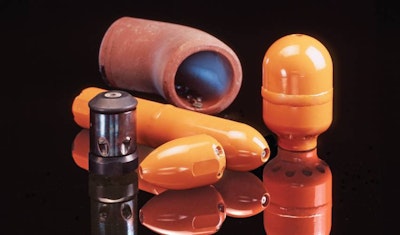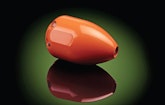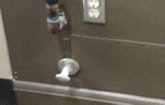
Interested in Plumbing?
Get Plumbing articles, news and videos right in your inbox! Sign up now.
Plumbing + Get AlertsFor several years, a 12-story building in Midland, Texas, had been experiencing sewer odors in the top four floors. Owners of the 35-year-old building had spent thousands of dollars trying to track down the smell. In August, Richard Pierce, a licensed master plumber in Texas and New Mexico, became the latest sleuth on the case.
“That’s the largest building we’ve done,” says Pierce, plumbing service manager at First Service A/C Contractors in Odessa, Texas.
The job wasn't easy. Each time a new tenant moved in, the vacated space was remodeled and covered with drywall.
“We were lucky to find a spot in the mechanical room on the sixth floor that we could tie into the system,” says Pierce, 57, who began work as a plumber’s helper in 1974 while in high school.
The 3-inch, cast iron stack Pierce and his team tied into was one of two they found.
“The two stacks are together, mainly for the kitchen sinks and stuff,” he says. “After inspecting the system closer, we found one stack was for the vents and the other was for the waste. They had so many different plumbers come in. They had people tie sinks into the vent stack. They had people tie sinks into the waste stack. It was a mess.”
Safety first
Before beginning the smoke test, Pierce and his team called the fire department, alerted the alarm company, put the smoke alarms on test mode and shut down the elevators. Tenants were alerted in advance. As an added safety precaution, people, where possible, were evacuated from the test area, especially those with asthma.
“We went in with 4-inch smoke bombs, closed the vent stacks and pumped smoke into the system,” he says. “We had people on every floor looking for smoke.”
What Pierce’s team found was a drain tapped into a vent pipe with no traps; places where drainlines had been cut from drinking fountains and drywall placed over the openings; a cracked 3-inch tee; and a dried out trap covered with black tape. There was also smoke in the elevator shaft.
Pierce says, depending on ventilation, the smoke typically lasts for about five minutes.
Dim the lights
“It’s easier to see if the lighting is dim in the building – not dark – but dim,” he says. “And have a good bright flashlight. If you have suspended ceilings you need ladders to look inside the ceiling grid, because a lot of times that’s where your problems will be.”
Upon completing the two-hour test, Pierce called the fire department to let them know that any future calls were an actual fire.
“The head maintenance guy said we found enough for now,” Pierce says. “Once we get those fixed, we can go back and smoke bomb it again.”
Pierce uses Smoke Emitters with four-minute burn time from Regin HVAC Products to conduct his tests and a wet/dry vac rather than a smoke machine.
“It’s pretty simple,” he says. “We put the smoke bomb in the wet/dry vacuum on a piece of metal and we adapt the hose to fit the cast iron so it’s tight, seal off the intake pipe and blow it in. Trust me, when you blow it into the system, if there’s a dry P-trap or cracked piece of cast iron somewhere, it’s going to come out.”
Pierce has been making his own smoke machines for about 30 years.
“I went out in the sheet metal shop and made a box and put an old 10 hp blower on it. Then one of the guys said why don’t you just use an old wet-and-dry vac? It works as good as any smoke blower you can get,” he says. “You just buy an $89 wet-and-dry vac, and you don’t use it for anything else but a smoke machine.”
First Service A/C has about 80 employees and does about one smoke test a month, mostly for commercial customers.
“We had a restaurant once where they covered up a washing machine box. And where they had a trap that dried out, they had sewer odor. I even had another plumbing company come in my office and ask if I could help him.”
Pierce went on the roof, taped off the vents and connected the wet/dry vac to an open stack. Smoke came out of a wall plug next to the secretary’s desk. The building had a drinking fountain in the wall with a 2-inch line someone had cut but never capped.
Hospital call
In October, Pierce and his team were on the job again, this time about 100 miles west in Pecos, Texas, at the Reeves County Hospital.
“They had a new building built a little more than a year ago just behind the main hospital,” he says. “It’s about 4,000 to 5,000 square feet in size. From day one they had a sewer odor. The plumber and contractor for the new building could not or would not find the problem. So after almost 18 months, the owner called us in.”
Pierce used seven four-minute smoke bombs to conduct the test. What he found was a 2-inch PVC pipe open in the wall next to the nurses’ station in the middle of the building. No other plumbing was nearby.
Check it out
“Our plumber capped it off with a 2-inch Fernco cap,” he says. “I believe we made the nurses very happy.”
Have a unique job or better way to use a product? Send your tips or project description along with photos and/or video to Cleaner at luke.lenoble@colepublishing.com.










